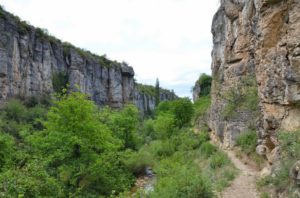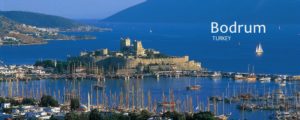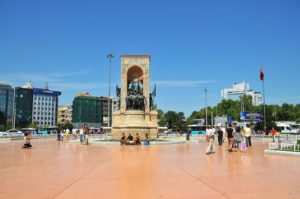This castle was once a ruined cesspool of battle, torture chambers and war. This museum has come a long way from where it began and has gone through everything such as illegal torture to bombardment in World War I. The very first reconstruction and vision of this museum was sought by Peter Throckmorton in 1958, who was simply just a journalist trying to pioneer history and shed some light on what had happened in the castle.
It wasn’t until Professor George F. Bass from the Scientific Nautical Archaeology department decided to step up and help restore this castle into its once former glory and make it something beautiful. Then, another individual named Hakki Gultekin got involved who was once the director of the Izmir Museum decided to bring this matter up to the government in Ankara. Another contributing individual was Azra Erhad, who was behind the translation of movies such as the Iliad and the Odyssey translating them into Turkish.
This was the first time the government of Turkey ever gave a grant to a museum. They gave the castle the necessary funds to transform it into a museum from an abandoned torture prison that it was once known as. Once Haluk Elbe decided to depart from the museum, under the director of Nurettin Yardimci from 1973 to 1975 and the Ilhan Aksit of 1976 to 1978, the restoration of the castle had slowed down significantly. The English Tower however was an exception as the restoration was finished in 1975. Once Oguz Alpozen took ownership of the museum, the process was expedited and resumed process in 1978.
Recent Articles
By the time the new director Oguz Alpozen became appointed to the director, he was already involved with the museum in one capacity or another, but he wasn’t a director before that time. Back in 1962, he was merely a student and had participated in some of the underwater excavations that helped shape the museum. Oguz was regarded as a champion of underwater archaeology and was very good at what he was doing.
Once Oguz started excavations for Bodrum and the museum, he realized he was obsessed and fascinated with the history of this museum and its past. He wanted to uncover more regarding shipwrecks in the area and explore the history of the area. He also wanted to make sure that the results of excavations he found in Bodrum stayed in Bodrum as well. He didn’t want any of his findings falling into other hands only to end up in other areas or museums.
Once this level of stress was on the shoulders of Alpozen, it was then that he proceeded to give the green light on the restoration and re-construction of the museum. The work had been started by Haluk Elbe but had not been fully finished. Their ultimate goal was to make sure that artifacts and historical pieces of history were available to the public that was discovered on the ground floor of the sea. There was a lot of emphasis in cooperating with the INA or the Institute of Nautical Archaeology.
Back when these excavations were being made from the 60s to the 80s, the world became aware of just how many buried treasures are out there and how many people have yet to discover some of the world’s greatest secrets. It wasn’t until 1989 that there was actually a sarcophagus discovered by the use of a backhoe that wouldn’t have been normally discovered by the use of a brush or a shovel that archaeologists were used to using before that.
There was an exciting light shed on the discovery as a sarcophagus was a huge discovery for a variety of reasons. It was at this time that a wealthy woman was discovered in the sarcophagus by the amount of jewelry and the nature of the jewelry being worn. Some people believe that the jewelry found may have belonged to Queen Ada but there’s no real evidence to support this notion and no one knows for sure who the woman in the sarcophagus is.
There was also another shocking revelation that was found in 1993. Once the remains of a prisoner were found right in front of the English Tower, it reassured people’s historical beliefs of torture chambers and what the original purpose of the castle was used for. A lot of people believe the chained remains were slaves or people who were tortured to the point of death. However, the victims remain unknown and the exact reasoning of why they were placed in that location is also unknown.
However, even as impressive as the historical findings of this place are in its own, it fails to captivate the audience unless it’s presented in a manner that’s entertaining. While these are impressive relics from the past, most museums failed to captivate the audience. However, the Bodrum Museum has excelled in this field with hundreds of thousands of tourists a year. The public interest from the history and the exhibits alone is enough to draw you in to this museum.
There’s also a lot of care and thought put into the overall care of the museum, including the grounds and the facilities, not including the restoration. While the majority of the castle that can be repaired has been repaired, there’s still some work left to go and exhibits left to expand because of how much history is behind this castle. This has been regarded as one of the best and finest museums in the world.









